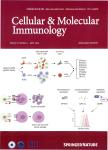Langerin (CD207) represents a novel interferon-stimulated gene in Langerhans cells
作者机构:Institut de Recherche en Infectiologie de Montpellier(IRIM)Universitéde MontpellierCNRSMontpellierFrance Systems Immunity University Research Institute and Division of Infection and ImmunityCardiff University School of MedicineHeath ParkCardiffUK School of Pharmacy and Pharmaceutical SciencesCardiff UniversityCardiffUK Division of DermatologyWomen’s College HospitalTorontoCanada Division of DermatologyDepartment of MedicineUniversity of TorontoTorontoCanada
出 版 物:《Cellular & Molecular Immunology》 (中国免疫学杂志(英文版))
年 卷 期:2020年第17卷第5期
页 面:547-549页
核心收录:
学科分类:1001[医学-基础医学(可授医学、理学学位)] 100102[医学-免疫学] 10[医学]
基 金:This work was supported in part by an ANRS grant(No.D15236)to F.P.B This work was also supported by the Cardiff University President's Research Scholarship to M.A.C grants from lSSF-WT and the Gates Foundation to V.P G.M.was the recipient of a postdoctoral fellowship from Labex EpiGenMed(Montpelier,France)and is currently supported by the ANRS
主 题:Langerhans interferon belongs
摘 要:Interferons(IFNs)are“warning signalcytokines released upon pathogen *** control the expression of interferonstimulated genes(ISGs),which are often crucial to restrict viral infections and establish a cellular antiviral state.1,2 Langerin(CD207),a well-known surface receptor on Langerhans cells(LC),belongs to the C-type lectin receptor(CLR)family and constitutes a major pathogen binding receptor able to regulate both innate and adaptive immune responses.3,4 Importantly,this CLR was reported as an antiviral receptor.



